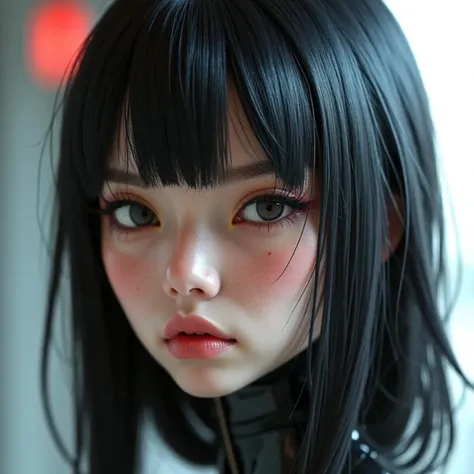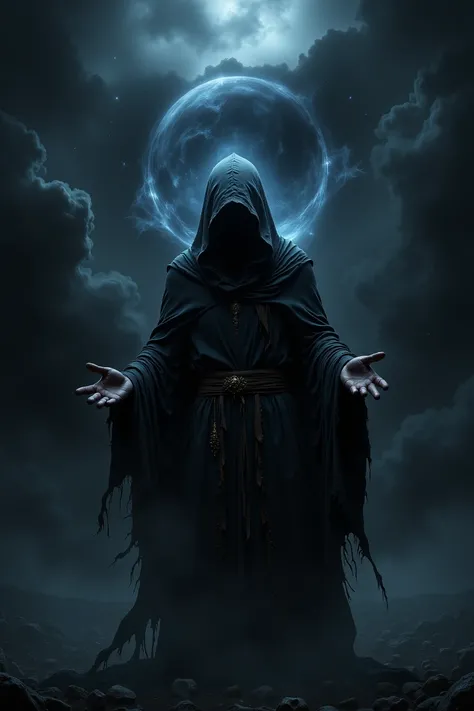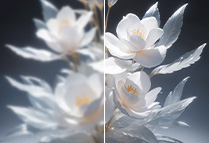There is a train that is going up a mountain in the fog

The year is 2510. Humanity and machines have fully integrated, forging a dark utopian existence—a future-tech noir reality infused with brutalist escapism. Remote mountain cabins, post-apocalyptic bunkers, and avant-garde survival pods have become the pinnacle of repurposed, isolated living—hidden sanctuaries removed from the remnants of the world. This is dystopian decadence: minimalist gothic apocalyptic surrealism with an otherworldly architectural ethos. A vast pale haze blankets the Scandinavian mountain outback, setting the stage for an extraordinary bunker-home carved into sheer rock beneath a towering cliff. A super-dynamic design of impossible, gravity-defying forms, seamlessly integrated into the brutal terrain. Its structure is forged from off-world materials: black concrete, retro-hued shipping containers, industrial corrugated steel, and massive support columns engineered for absolute resilience. The surrounding landscape is stark yet cinematic—rugged mountains and pine, shrouded in sinister fog against a burnt-sunset noir horizon. The architecture is a paradox—lush brutalist shadows cast across bizarre, otherworldly geometries, where stacked shipping containers meet monolithic black concrete. The muted, ominous color palette enhances the analog photographic aesthetic, creating a rich, textured atmosphere. This isn’t just a home—it’s an existential statement, a surreal monolith standing against the vast and indifferent cosmos. Cinematic drone shots capture its staggering proportions, its vertigo-inducing perspectives, and the sheer, epic scale of its existence. Enormous bay windows carve into the structure, their glass reflecting the dying embers of an apocalyptic sunset, casting eerie golden glows into the stark interior. The ambiance is mesmerizing yet unsettling—a quiet echo of humanity’s insignificance in an uncaring universe. This is world-building at the intersection of postmodern retro-futurism and brutalist sci-fi surrealism.”
提示词
复制
The year is 2510. Humanity and machines have fully integrated, forging a dark utopian existence—a future-tech noir reality infused with brutalist escapism. Remote mountain cabins, post-apocalyptic bunkers, and avant-garde survival pods have become the pinnacle of repurposed, isolated living—hidden sanctuaries removed from the remnants of the world. This is dystopian decadence: minimalist gothic apocalyptic surrealism with an otherworldly architectural ethos.
A vast pale haze blankets the Scandinavian mountain outback, setting the stage for an extraordinary bunker-home carved into sheer rock beneath a towering cliff. A super-dynamic design of impossible, gravity-defying forms, seamlessly integrated into the brutal terrain. Its structure is forged from off-world materials: black concrete, retro-hued shipping containers, industrial corrugated steel, and massive support columns engineered for absolute resilience. The surrounding landscape is stark yet cinematic—rugged mountains and pine, shrouded in sinister fog against a burnt-sunset noir horizon.
The architecture is a paradox—lush brutalist shadows cast across bizarre, otherworldly geometries, where stacked shipping containers meet monolithic black concrete. The muted, ominous color palette enhances the analog photographic aesthetic, creating a rich, textured atmosphere. This isn’t just a home—it’s an existential statement, a surreal monolith standing against the vast and indifferent cosmos.
Cinematic drone shots capture its staggering proportions, its vertigo-inducing perspectives, and the sheer, epic scale of its existence. Enormous bay windows carve into the structure, their glass reflecting the dying embers of an apocalyptic sunset, casting eerie golden glows into the stark interior. The ambiance is mesmerizing yet unsettling—a quiet echo of humanity’s insignificance in an uncaring universe.
This is world-building at the intersection of postmodern retro-futurism and brutalist sci-fi surrealism.”
共 0 条评论
0
0








